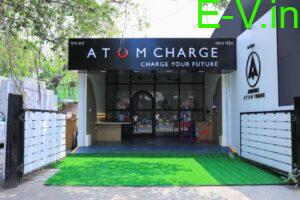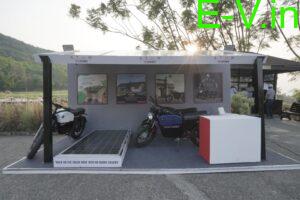
Whether they are two-wheelers, three-wheelers, or four-wheelers, India’s EV market is flourishing. Government initiatives are also helping the EV sector. Despite the fact that the country’s EV sales are increasing at an exponential rate, the issue of charging continues to obstruct the smooth integration of electric vehicles into the mainstream transportation system due to insufficient charging infrastructure and accessibility issues.

EV Chargers are mainly of 4 types: Mode 1, Mode 2, Mode 3, and Mode 4. However, in our country, electric vehicle charging uses the last 3 chargers.
Mode 2 Chargers: These chargers are standard AC power outlets commonly found in households. They provide a maximum power of 2.3 kW, resulting in a slow charging process.
Mode 3 Chargers: These chargers deliver between 3.4 kW – 22 kW. Mode 3 charger can charge the vehicle battery from 20 percent to 40 percent in an hour, depending on charger capacity as well as vehicle battery capacity.
Mode 4 or DC Fast Chargers: These charging stations are commonly found in dedicated EV charging stations. These are ideal for long-distance travel and provide quick top-ups during road trips. These chargers deliver substantial power within minutes, remarkably reducing charging time.
With more than 13 lakh Hybrid/EVs in India to date and the number still growing, EV charging is going to be of great concern. EV charging through the above 3 Modes is okay, but have you ever thought about EV charging in a sustainable way? That is what ATUM Charging has been doing since it was established.

ATUM Charge is India’s first 100% Green EV Charging Station. It is powered by our very own ATUM Solar Roof, making it a completely sustainable alternative to otherwise normal EV charging units that use thermal power generation. ATUM Charge stations are fabricated using Vnext Boards – a range of fibre cement boards that are eco-friendly alternatives to gypsum, wood, and plywood. ATUM Charge would therefore be generating green energy in the real sense in a green infrastructure set-up.
ATUM Charge has 3.3-10 KW normal charging EVSE (Electric Vehicle Service Equipment), and it has at least 2 EVSE per charging station. A wide network of ATUM EV charging points reduce the need for high power and ultra-high power charging points, which are more expensive and can be detrimental to EV battery health if overused. They are less expensive, and requires less space, reducing capital costs, and can be connected to low-voltage single- and three-phase distribution networks.
Mr. Vamsi Krishna Gaddam, Joint Managing Director, Visaka Industries, said, “ATUM Charge is leading the way towards a sustainable future for EV charging in India. With the EV industry booming, the issue of charging infrastructure remains a critical challenge hindering the full integration of electric vehicles into mainstream transportation. As the demand for EVs rises, we are envisioning a cleaner and greener future for urban mobility. By championing sustainable EV charging, ATUM Charge revolutionises the landscape of urban transportation, propelling India towards a future that embraces clean energy and green commute solutions.”
ATUM Charge has already installed 250+ ATUM Charging stations across the country, all with a net Zero Carbon footprint, and is still counting.

If you are an EV manufacturer (or) EV Dealer (or) EV Supporter who want to share news related to Electric vehicles on our website, please send an email to crm@electricvehicles.in
For the latest Electric vehicles news,
follow electricvehicles.in on
and our YouTube Channels




